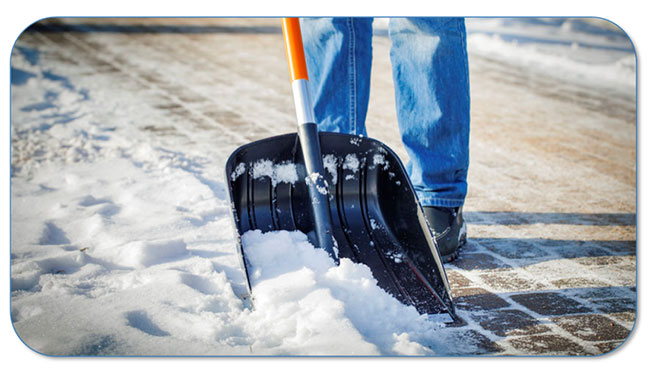Winter is knocking at the front door! Time for cosy Christmas markets, fairy lights and invigorating walks in the snow. But winter also equals shivering low temperatures and inclement weather. So how can you best protect your employees from cold working conditions? With the measures below, you can make winter work more pleasant… and warmer for everyone!
What does the Occupational Health and Safety Act say about working in low temperatures?
Low temperatures can make work difficult. Of course, it depends on what kind of work you do: sitting on an office chair or heavy manual labour in a warehouse? The Occupational Health and Safety Act in the Netherlands states that the temperature in the workplace should not be detrimental to the health of the employee. Although no specific sub-temperatures are mentioned, it does stipulate that employers must do everything possible to prevent health complaints.1
If a low temperature cannot be avoided, the employer is obliged:
- Provide personal protective equipment (e.g. warm vest, gloves, hat);
- Reducing the duration of work;
- Alternating work with work in a warmer place.
Six tips to combat the cold in and around your warehouse
These tips will make working in cold environments much more pleasant. Are your employees already this warm?
► 1. The (warm) clothes make the man
Wearing appropriate clothing is our first tip. And with good reason. There’s a lot to be said about it.2
-
Wear layers instead of one thick coat: layer several garments on top of each other. Nothing works better against the cold than layers. Besides, it gives you much more freedom of movement.
-
Choose natural materials: synthetic fabrics often feel colder than natural materials such as cotton and wool. An exception to this rule is fleece. This 100% synthetic and super-soft material holds air layers perfectly and therefore insulates perfectly.
-
Cover all extremities of your body: your head and hands are the most sensitive to cold. So consider a hat or other headgear, earmuffs and gloves. In addition, make sure you always wear clothes that fit snugly around your wrists and ankles. This will prevent cold air from slipping through to the rest of your body.
Finally, keep in mind that as an employer, it is best to provide the necessary equipment to dry and/or warm clothes quickly.

► 2. A warm break works
Provide more frequent breaks in a heated room so that your employees can regain their temperature. Re-energise your employees even faster with a bowl of soup, a steaming cup of chocolate milk or a cup of coffee. That always tastes good!
► 3. Keep your doors closed
To maintain the temperature in a warehouse, it is best to pay extra attention to the loading bay gates in freezing weather. That’s where most of the cold gets in. Close them quickly and/or cover these areas with a special ‘dock shelter‘. This is a kind of cushion around your loading dock that maximally blocks cold air when a truck needs to be loaded or unloaded. We apply these measures here at RAJA too.
► 4. Use appropriate work material
In a warehouse, many materials are made of metal. We are not really fans of that in a cold working environment. Metal often feels extra cold in low temperatures and therefore gives you chilled fingers. We prefer materials with a wooden, silicone or rubber grip.
► 5. Keep it dry
If you are already cold, accidentally stepping into a puddle of water will not make you very happy. Water and moisture make us feel even colder. And that is exactly what we want to avoid. Make sure you systematically wipe damp spots dry. Use strong wiping paper in your warehouse, for instance.
If the puddle of water is persistent and comes back often, it is better to cordon off the area with safety cones or a protective barrier.

► 6. Put a scoop of salt on top!
The showpieces of King Winter are undoubtedly snow and sleet. They can lead to exciting slips and falls on your business premises. However, preventing them is simple; you mainly need road salt.3 When you buy road salt, you usually come across one of these variants:
- Calcium chloride
- Sodium chloride
Calcium chloride is especially effective at temperatures as low as -20 °C. Sodium chloride does not need such a low temperature to keep the surface free of snow. You can use this road salt as early as around +0 °C. Since it rarely freezes -20 °C in the Netherlands – hold wood! -, sodium chloride is therefore the most suitable road salt.
An important rule: preventive gritting is better and more economical. On a surface that is already frozen and covered with snow, you need twice as much road salt as if you were spreading preventively.
Is the damage done, and is there still a layer of snow on your car park? Then remove the snow first and only then apply the road salt. If you don’t, you need even more road salt, which can be harmful to the surface.

- Store tape at a temperature between +18 and +25 °C. For colder storage temperatures, we recommend transferring the tape to a heated room 24 hours before use. Tape is best adhered at a temperature above +15 °C.
- Among PP (polypropylene) tapes, there are variants that are more resistant to low temperatures.
- Preferably pack products that are sensitive to low temperatures in an isothermal box. This keeps the temperature for your products constant for a longer period of time.
- Paper padding material insulates better than plastic material (such as air cushions or bubble wrap).

Sources:
1 www.arboportaal.nl/onderwerpen/kou/arbowet/
2 www.asap.be/nl/artikel/5-tips-om-te-werken-de-kou/
3 www.bernard.fr/Content/Static/conseils/comment-utiliser-le-sel-de-deneigement.cshtml














